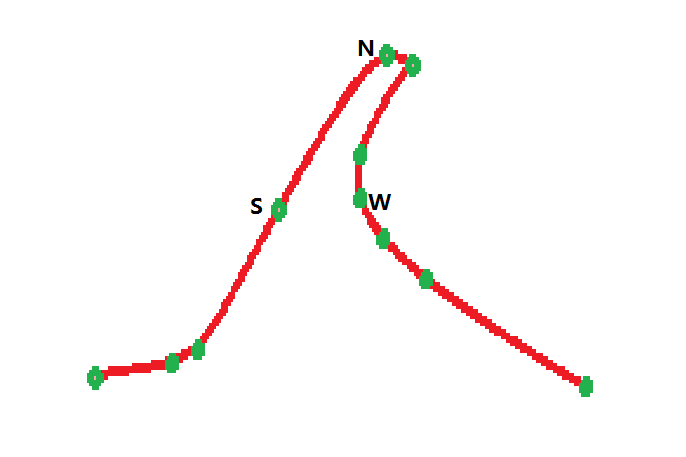
array of points(green dot) connected into a curve line,It was just nothing more than array of points arranged in order , order of insertion.
As shown in the above figure, my goal is for the player to start from "S" and choose a point that is closest to the player and is naturally reasonable(i mean i can't walk through the wall).
But because the shortest distance between the two points is W, it suddenly move through to the other side, which is definitely not what we want.actually what i desire is "N".
any hints on this,look forward to your reply,thank you.
Of course, i have used cross-production to determine if the point being chosen is relative to the left-side or right-side of my current location.with points on the right-side of my position has been chosen as candidates,then pick one of them, which is minimum distance compared with others.



